On to Chambord the finest of all the châteaux in the Loire and the largest. The château to end all châteaux, it is a masterpiece, perhaps the greatest architectural triumph the French Renaissance ever created. It is second in size only to the Château of Versailles, making this one of the great national monuments of the country.
Chambord is one of the most recognizable châteaux in the world because of its distinctive French Renaissance architecture which blends its traditional French medieval forms with the classical Renaissance structures, heavily influenced by the Italian style.
.jpg)
This is a dream place to visit, 156 meters long, 117 wide and 56 meters tall with 426 rooms, 77 staircases, 282 fireplaces, more than 800 sculpted columns and with massive towers at each corner. You will definitely find it is worth going inside, although a majority of visitors don’t do that, they just take a look at it from the outside, take a picture, maybe they’re on a bus tour or driving and they move on, but we’ll show you what they are missing.
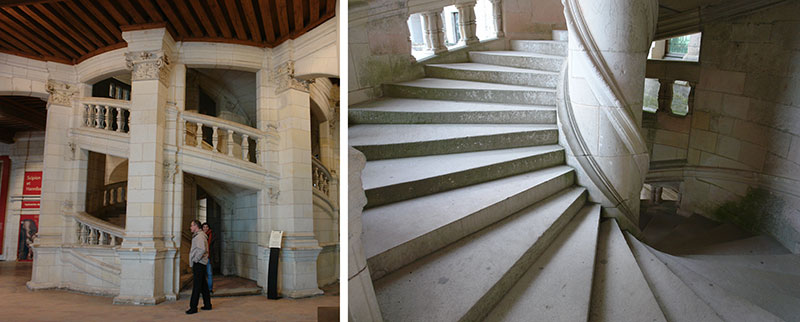
The first thing you'll see inside is one of the main architectural highlights, a spectacular double spiral staircase – it's the centerpiece of the château. It forms a double helix with two intertwined flights of steps ascending three floors, without ever meeting. This grand staircase rises through the center of the building, providing direct access to all the main halls of each floor.
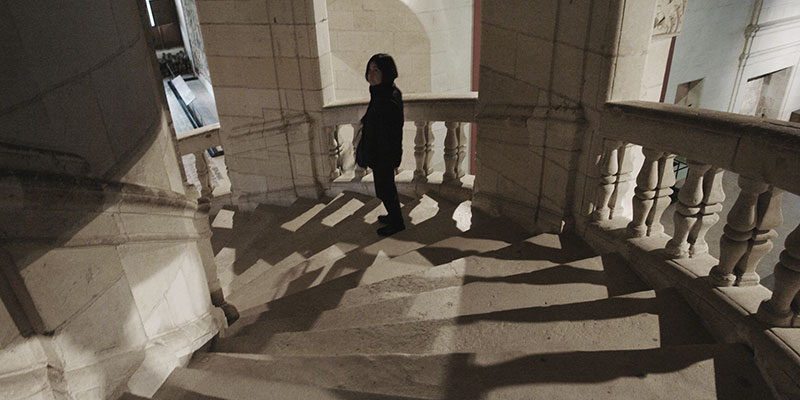
There are suggestions that Leonardo da Vinci may have played a role in designing the staircase, but this has not been confirmed – even though he lived in the region and was supported by the King who built the Château François the first.
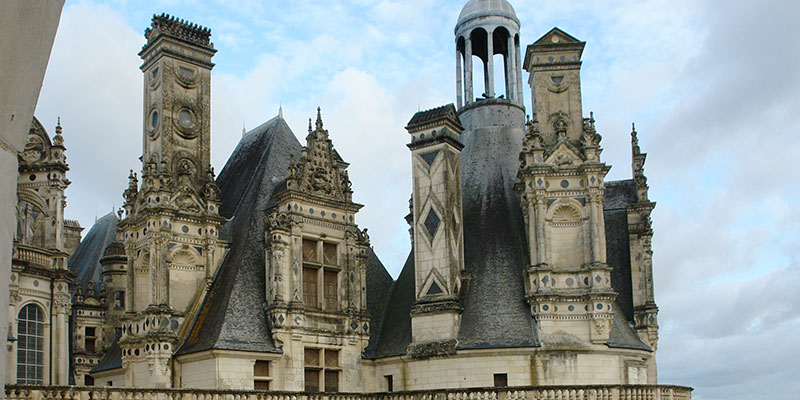
You may keep walking up the spiral staircase and soon come out on the rooftop. The view seems like a strange fairytale village up in the air. It's been called more like the spires of a city than the points of a single building. Sculptured chimneys and bold buttresses are another architectural triumph of this great monument.
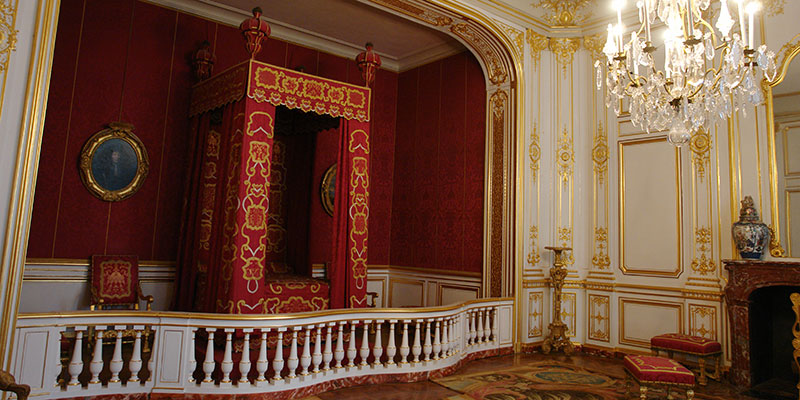
The giant palace was meant to be a hunting lodge not a primary residence, and yet it grew bigger and bigger over its period of construction. Ironically King Francis only stayed here for a total of about seven weeks during his entire reign. This château was never intended to provide any form of protection from enemies; Some elements of the architecture are borrowed from Italian Renaissance architecture.
.jpg)
Chambord was not feasible to occupy on a long-term basis, especially because it was constructed with the purpose of only short stays for hunting to begin with. Heating this building was impractical because of the massive rooms, open windows and high ceilings.
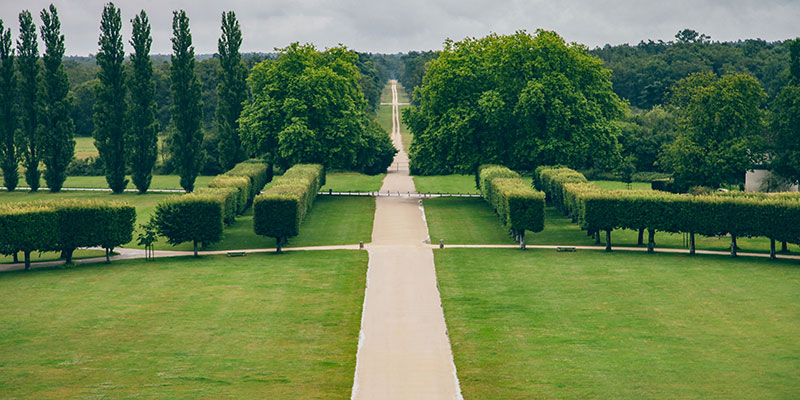
Similarly, as the château was not surrounded by a village or estate, there was no immediate source of food other than game. This meant that all food had to be brought with the group, typically numbering up to 2,000 people at a time.
Construction began in 1519 but was interrupted by war and dwindling royal funds and some difficulties in laying the foundations. So the building resumed in 1526, and for the next 12 years 1,800 workers were employed full-time building the château.
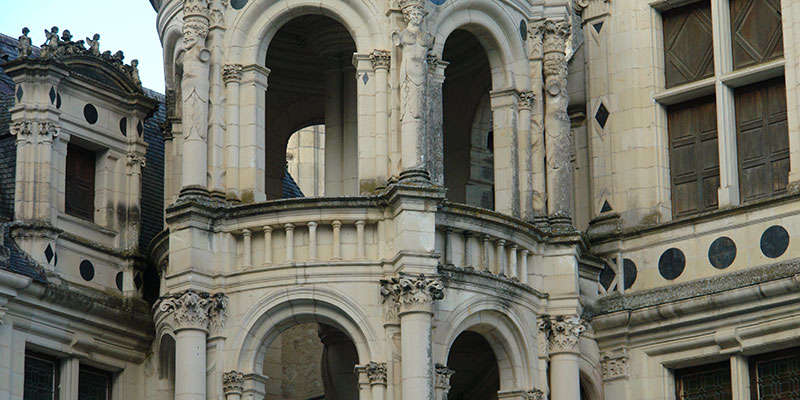
Châteaux in the 16th-century were stylistically similar to castles, with some common features such as a keep, corner towers, and surrounded by a moat, but they did not provide any serious defenses, it was more for show and comfort.
.jpg)
Francis Premiere began the era of modern France, the great age of the Renaissance and Reformation, when other important sovereigns lived including Pope Leo X, Emperor Charles V, Henry VIII and Sultan Suleyman. After Francis died in 1547, the building of Chambord was continued by his son, Henry II but neither he nor his accent successors ever completed it.
As part of your visit be sure to have a look at the 3-D movie room on the ground floor. It provides a virtual visit to the Château using computer animation, really giving you a fantastic insight into the Château’s construction and architecture.
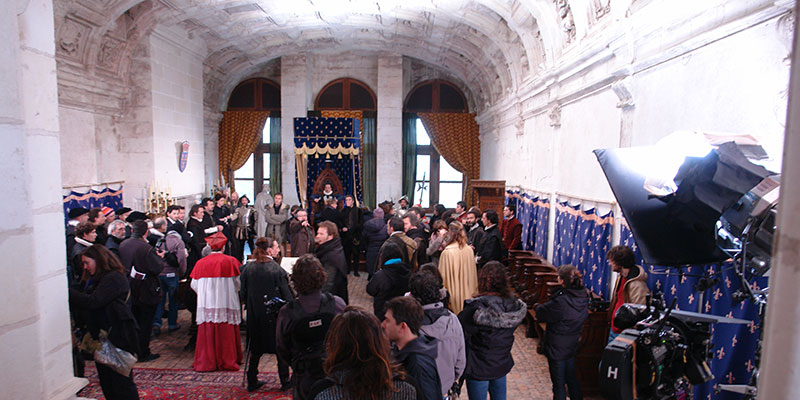
While walking up we encountered a bizarre scene, a crowd of costumed characters right out of the 16th century. The château has been described as looking like something right out of a historical movie, and here it was in person -- a movie production. As we were leaving we saw few of the actors out there relaxing and being interviewed – part of this major historical movie production.
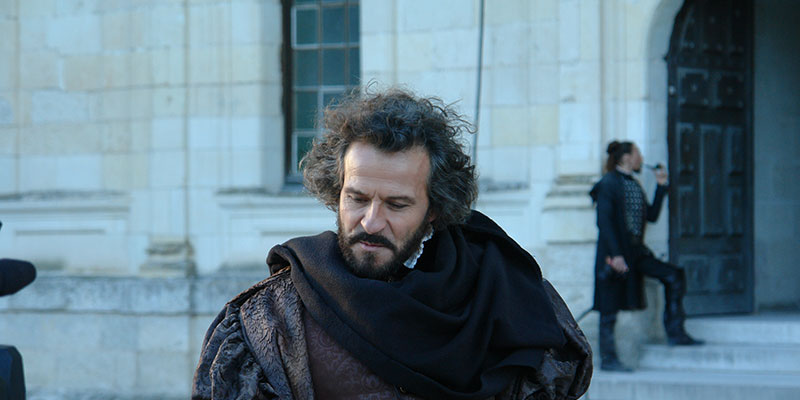
Our series about the Châteaux of the Loire is also bringing you to Amboise, Chambord, Cheverny, Azay and Blois and a few other places, with our home base in the city of Tours. Have a look at our YouTube channel and this website for more movies about this beautiful region and many videos about the rest of France.